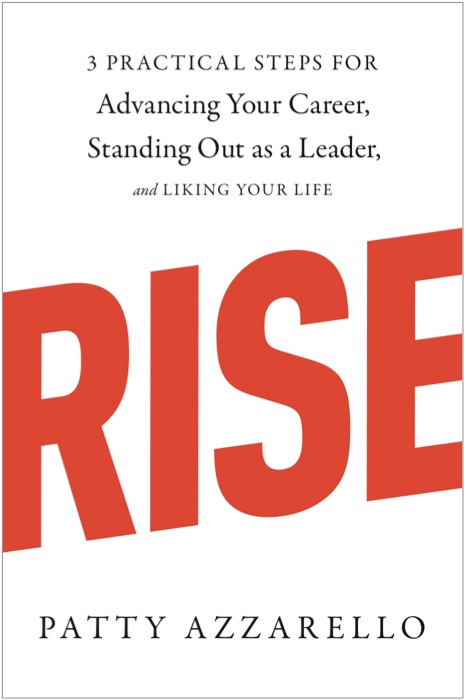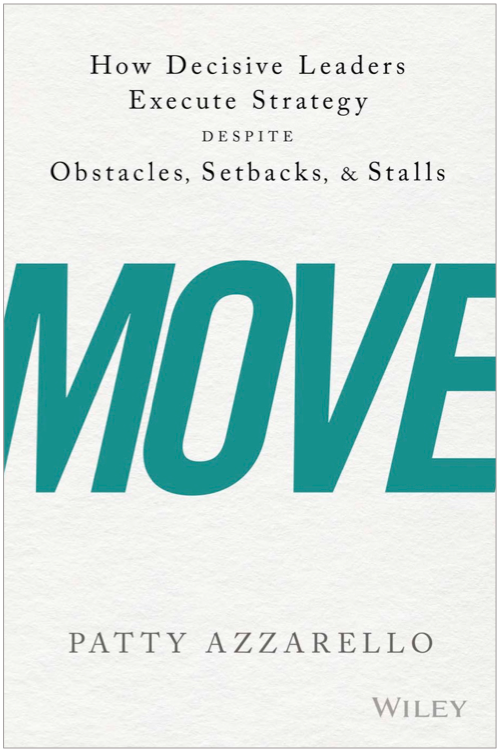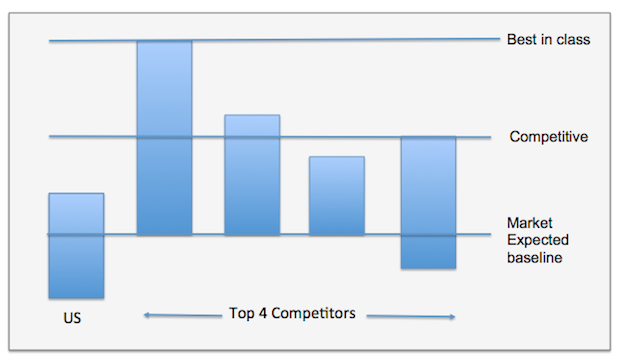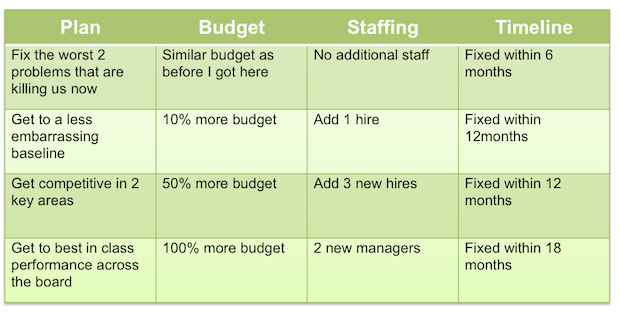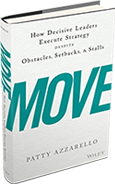Remember, Great isn’t Cheap
I see leaders setting themselves up for failure and credibility loss when they don’t differentiate the cost of doing a GREAT job from the cost of doing an OK job.
Here’s what I mean. You are the expert. You own the task.
So you’ll have said: Here is how I would improve the [quality, competitiveness, customer satisfaction, marketing effectiveness, service, sales performance, etc.]
People are impressed because before you got there they didn’t even know what best in class looked like, and now they are really excited that there is someone who really knows what they are doing and can take them there.
The company is expecting a huge transformation…but then, without the right, realistic resource discussion,
… they will expect you to deliver the dream-scenario that you talked about — but without the dream-budget!
Always show the cost
It’s vitally important that within the first moments of this discussion, that you push back in a highly credible way, so you are not set up to own an un-doable commitment.
One of the reasons that decision makers underestimate the resources required to get to a great position is that because they do not fully realize the size of the hole they are in, or they don’t fully understand why, or even that they are in a hole.
Climbing out of the hole
They know the company is not performing in your area as they wish, but because they do not have your expertise, they can’t see the 37 reasons why.
f you don’t show them the depth of the hole they are in, they will expect to get to best in class right away just because you showed up.
If you don’t show them the reality, there is a good chance they will believe that only thing between where they are now and best in class performance is YOU–with no additional staff, budget or time to get there.
Don’t let this happen. Act right away.
1. First show the scope of the journey (The size of the hole)
Create something that looks kind of like this.
Articulate the many steps that exist between where you are now, where you competitors are, and what best in class looks like. If there is a big gap between today and great, make sure that you communicate visually that there is indeed a big gap.
2. Next, show the cost of various choices…
You need to give management CHOICES for different levels of outcomes that cost different amounts.
OK, if you only increase my budget 10% we can fix these things, and add one item, but we can’t add most of the competitive features. If that’s the funding choice you make, this is what you will get.
The chart looks something like this:
This way you are still building credibility by showing that you can do the complete job, but you are not shooting yourself in the foot by signing up for the impossible.
The impossible is stressful!
I see leaders all the time that get signed up for doing the great job, but without the budget.
Then they put all the pressure on themselves to try to do the impossible without the necessary resources, and feel like they are personally failing when it can’t be done.
This is not your problem alone.
This is a choice that the company needs to make.
Your job is to shine the spotlight on clearly defined choices.
Do yourself a favor and make sure you paint the reality and choices clearly, and only sign up for as much as you can get funded.
Share the knowledge of the scope of the journey.
Share the decision about the level of investment and expected outcomes with the management team. It’s not just you who should feel the pressure.
Make sure everyone has the same definition of success.
What do you think?
What do you think about these ideas? What would you add? Join the conversation about this on my Facebook page.
Was this useful?
If you found this article useful, please help me share it with others and encourage them to subscribe to this Blog for free.
ABOUT PATTY:

Patty Azzarello is an executive, best-selling author, speaker and CEO/Business Advisor.
She became the youngest general manager at HP at the age of 33, ran a billion dollar software business at 35 and became a CEO for the first time at 38 (all without turning into a self-centered, miserable jerk)
